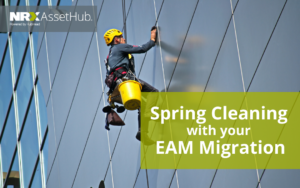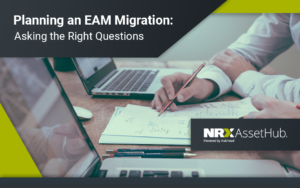Software migrations are essential for a variety of reasons. For instance, moving to a new EAM system can help improve reporting, updating, and analyzing data. Moreover, migrating to a new system offers an opportunity to adopt best practices and improve your asset and maintenance master data. However, an EAM migration process may come with some hurdles, some of which involve potential data loss due to imperfect mappings between the source and target EAM system.
Minimizing data loss
1. Plan a separate project: By separating your migration project, you are more likely to plan, budget, and come up with appropriate deadlines to complete your project. Data migration is not a quick and easy process; much planning needs to be done to ensure that your asset and maintenance data is not lost in transit. Also, assigning an appropriate team who understand your assets to work on this project can ensure your organization is not missing out on any crucial steps.
2. Know your target EAM system: Being familiar with your target EAM beforehand can go a long way. It’s better to know the ins and outs of your new system before you transfer any data, especially since your target system will have new features and different options to store data. Making yourself familiar and training your team to make most of your new system can avoid data gaps and information loss that result in new features not functioning to their full potential.

3. Don’t ignore your data quality! Before transferring any old data into your new target system, ensure that your old data is accurate and up to date. It is important to do a quick audit of your previous data to know what needs to stay and what does not. It also provides an opportunity to add some consistency and standards to how your assets are organized.
4. Prepare for the long hours: Finally, you need to prepare in advance for any delays in your transfer process. Data migration is a lengthy process, and in this case, patience is key. Simultaneously, having a backup plan and a backup system with your old data is recommended since you at least have something to rely on if there are any errors in the process.

Make it easy!
An EAM migration doesn’t have to be that hard! Planning and scheduling are key in this process. NRX AssetHub is the perfect solution for migrating asset and maintenance master data during your EAM migration, and our experienced services team can guide you successfully through the whole process. If you’re seeking assistance in migrating your asset and maintenance master data during an EAM migration, feel free to reach out and book a demo.
Spring Cleaning with Your EAM Migration
Enhancing User Experience With an EAM Migration
Planning an EAM Migration: Asking the Right Questions
Share this article




